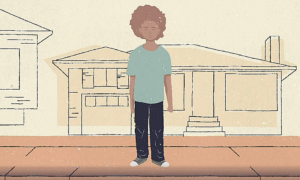 For three decades, I have listened in awe to the brave voices of children, youth and families who have shared, in anguish, their past experiences — experiences that anyone would objectively call “adverse” and ones that can have lasting effects on health and well-being.
For three decades, I have listened in awe to the brave voices of children, youth and families who have shared, in anguish, their past experiences — experiences that anyone would objectively call “adverse” and ones that can have lasting effects on health and well-being.
The seminal ACEs (Adverse Childhood Experiences) study opened my eyes to how pervasive their stories were and how these findings might influence the development of effective interventions and treatment, especially for system-involved young people.
In the late ‘90s, the Centers for Disease Control and Prevention and Kaiser Permanente released the first ACE study, one of the largest studies of childhood abuse and neglect and their connections to later-life health risks. The study’s results, as well as subsequent related studies, have, in part, hastened the spread of “trauma-informed” approaches that have permeated into the nomenclature and delivery of human service today.
This research matters. It links childhood experiences of abuse, neglect, violence, substance use, mental illness and incarceration to risky health behaviors, chronic health conditions, low life potential and even early death. Almost two-thirds of study participants reported at least one ACE, and more than one in five reported three or more. A 2009 report funded by the Department of Justice corroborates the ACE study findings, showing that almost 60 percent of children (ages 17 and younger) have been exposed to violence within the past year, either directly (as victims) or indirectly (as witnesses). The most recent child welfare data shows that approximately 702,208 children were victims of maltreatment in 2014.
Trauma-informed approaches offer frameworks grounded in an understanding of trauma, which provide safe spaces for engaging youth, delivering services and creating opportunities for individuals to successfully rebuild their lives. Embodied in the approach is a need to help youth heal, to pivot toward resiliency and ensure their voices are heard. As the literature base grows in trauma-informed approaches and what works in trauma-specific treatments, an important but often forgotten element is the role youth (and adult) clients play in shaping their effectiveness.
[Related:We Need to Understand How to Provide Trauma-Informed Care]
A 2015 exploratory study from Riebschleger, Day and Damashek exposes this need. The authors interviewed young people to discuss traumas experienced before, during and after placement in the foster care system and asked how they thought trauma-informed systems could be improved. Young people interviewed shared six important recommendations:
- Earlier intervention: Young people recommended enhanced supports for families struggling with poverty, substance abuse and mental illness. They also called for earlier interventions while they were in care — to “inspect [foster] homes for signs of trouble and abuse.”
- Better foster placements: Youth called for better foster home placements, ones where they felt cared about and that would improve their experiences. “Make sure the people who are there will love us. Don’t just push us off because they have an open space. An open space is not a love space.”
- Access to caring adults: Youth also insisted on the need to be heard — by foster parents, caseworkers and mental health counselors who “understand what [we’ve] gone through and can relate to it.”
- Better training for foster parents: Young people called for foster parents to receive training in trauma, positive reinforcement and for understanding and addressing the emotional and behavioral challenges foster youth face. They felt this would help build their self-esteem and decrease aggressive responses.
- Continuity in relationships: Many interviewed called for better connections while in care with family, especially siblings. They also asked that they not be “moved from home to home … and school to school,” and that they “keep the same case worker no matter where you move to … and after you transition out of foster care.”
- Opportunities to participate in leadership activities: Finally, many recommended that young people in care be offered more opportunities to give input in programming design and to policymakers — to help make a difference for young people who come into care in the future.
Recommendations from young people who have experienced trauma must be considered in tandem with the strength-based, positive youth development frameworks that human service systems are building around trauma-informed approaches. When armed with the right supports and services, young people become leaders in overcoming the challenges they face and build confidence — socially, emotionally and cognitively. The essence of trauma-informed approaches begins with engaging young people with respect, understanding and belief in the fact that in spite of adversity, all our youth can succeed.
Alisa Santucci, M.S., is a principal at ICF International and works on projects related to youth at risk and child welfare and on behalf of the Children’s Bureau’s Child Welfare Information Gateway. She is a licensed family therapist with more than 30 years of experience working with children, youth and families. This is one of three articles from ICF on topics relating to trauma-informed care. The first appeared in Youth Today on May 18.
For more information about the long-term effects of child abuse and neglect and other traumatic experiences, see:
- The Adverse Childhood Experiences study
- Longitudinal Studies of Child Abuse and Neglect
- Long-Term Consequences of Child Abuse and Neglect
For more information about evidence-based treatments and child welfare resources, see:
- Child Welfare Information Gateway
- California Evidence-Based Clearinghouse for Child Welfare, Trauma Treatment
- National Child Traumatic Stress Network Empirically Supported Treatments and Promising Practices
- SAMHSA’s National Registry of Evidence-Based Programs and Practices
More related articles:
House Judiciary Committee Reauthorizes Federal Juvenile Justice Block Grants
It Takes Zero Intelligence to Still Support Zero Tolerance in Schools
Letting Go of What Doesn’t Work for Juvenile Probation, Embracing What Does































